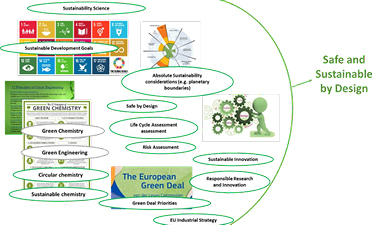Regulatory Review: June–July 2023
Trudy Watson-Leung, SETAC
The rate at which laws, regulations and administrative acts are created and improved all over the world is overwhelming. It can be difficult to keep on top of proposed or approved legal changes and guidance that may have a significant impact on how and why you do your science. The Regulatory Review in the SETAC Globe is designed to give a snapshot of topical regulatory information and activities that impact the SETAC scientific community.
U.S. Environmental Protection Agency
The U.S. Environmental Protection Agency (USEPA) Board of Scientific Counselors held a public comment period and panel meeting on the draft documents “Scientific Studies Supporting Development of Transcriptomic Points of Departure for EPA Transcriptomic Assessment Products (ETAPs)” and “Standard Methods for Development of EPA Transcriptomic Assessment Products (ETAPs).” The ETAP is a proposed USEPA Office of Research and Development assessment product that utilizes a standardized short-term in vivo study design and data analysis procedures to develop transcriptomic-based reference values for data poor chemicals.
Organisation of Economic Co-operation and Development
On 4 July, the OECD released 21 test guidelines to promote harmonized methods for chemical safety testing. Updated methods include TG 218: Sediment-water Chironomid Toxicity Test Using Spiked Sediment, TG 219: Sediment-water Chironomid Toxicity Test Using Spiked Water and TG 240: Medaka Extended One-Generation Reproduction Test.
European Food Safety Authority
On 6 July, the European Food Safety Authority (EFSA) reported that the European Commission (EC) and European Union (EU) member states did not identify any critical areas of concern in the peer review of the risk assessment of the active substance glyphosate in relation to the risk it poses to humans and animals or the environment. They did point out remaining gaps that included a lack of data for the assessment of risks for aquatic plants, unknown clastogenic potential of one glyphosate impurity, and an inability to complete consumer dietary risk due to lack of data on glyphosate residues on rotational crops. They made a note of outstanding issues, which include a lack of harmonized methodologies and agreed specific protection goals for the risk to biodiversity. Additionally, they pointed out the need for internationally agreed upon dedicated methodologies to integrate microbiome into risk of pesticides. EFSA plans on publishing the conclusions at the end of July and all background documents by mid-October on their glyphosate website.
Other European Regulatory Matters of Note
The European Chemicals Agency (ECHA) added bis(4-chlorophenyl) sulphone and Diphenyl(2,4,6-trimethylbenzoyl)phosphine oxide to the candidate list of substances of very high concern.
The EU added 24 substances that are carcinogenic, mutagenic or reproductive toxicants to the REACH Restriction List.
Environment and Climate Change Canada
Environment and Climate Change Canada (ECCC) published draft environmental quality guidelines for benzene, toluene, ethylbenzene and xylene for the protection of freshwater and marine aquatic life. The public comment period ends 23 August.
The ECCC also proposed the deletion of Naphthalenesulfonic acid, dinonyl- (25322-17-2), Naphthalenesulfonic acid, dinonyl-, barium salt (25619-56-1) and Naphthalenesulfonic acid, dinonyl-, calcium salt (57855-77-3) from the Canadian Environmental Protection Act Domestic Substances List. The public comment period closes 19 August.
China Ministry of Ecology and Environment
To accelerate the phase out hydrochlorofluorocarbons (HCFCs) ozone-deleting substances as mandated by the Montreal Protocol on Substances that Deplete the Ozone Layer, China’s Ministry of Ecology and Environment and Ministry of Industry and Information Technology released a list of 23 chemical alternatives for the three HCFCs that account for 99% of total production.
If you become aware of anything that should be in next month’s Regulatory Review in the Globe, please email.
Author's email: [email protected]





